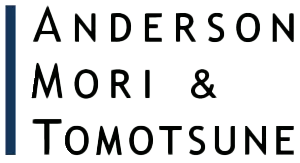I. Merger review
1. Does your jurisdiction use different notification thresholds for transactions in the traditional fields and in the digital economy? If affirmative, explain what the difference is and why.
No.
2. How does your jurisdiction deal with the situation where the target company is considered a nascent competitor or maverick innovator who does not meet the merger control thresholds (e.g., revenue, market share)? Please describe the approach (e.g., would your jurisdiction require mandatory notification or initiate a proactive investigation in the aforementioned case)?
The Japan Fair Trade Commission ("JFTC") has jurisdiction to review any mergers, irrespective of whether or not the notification threshold is met. If the JFTC becomes aware of a non-reportable transaction that it is interested in, the JFTC would try to reach out to the parties, Japanese subsidiaries of foreign parties, or lawyers who have represented the parties, and prompt the parties to submit information or to make a voluntary filing.
In 2019, the JFTC amended the Policies Concerning Procedures of Review of Business Combinations (the "Policies for Merger Review").1 This amendment was significant because the JFTC, in a manner clearer than ever before, indicated its willingness to review M&A transactions that have a large value that will likely affect Japanese consumers, but that do not meet the reporting threshold based on the aggregate domestic turnover of the target and its subsidiaries (non-reportable transactions). Furthermore, the amendment encourages voluntary filing for non-reportable transactions with an acquisition value exceeding JPY 40 billion, if one or more of the following factors are met:
- the business base or research and development base of the acquired company is located in Japan;
- the acquired company conducts sales activities targeting Japanese consumers, such as providing a website or a pamphlet in Japanese; or
- the aggregate domestic turnover of the acquired company and its subsidiaries exceeds JPY 100 million.
Given that the JFTC opened a review of the acquisition by Google LLC of Fitbit, Inc, and the acquisition by M3 of Ultmarc, even though those cases did not meet the notification thresholds, and that both cases resulted in the parties making a commitment, companies engaging in non-reportable transactions for which any of the above three factors are applicable should pay close attention to the potential need to make a voluntary filing with the JFTC.
3. For transactions in the digital economy, would the reviewing authority in your jurisdiction consult other government agencies for related compliance issues, such as data protection? If affirmative, please provide the details on the inter-agency consultation process. If negative, has the competition authority provided an official view (e.g., in formal guidance or soft law) as to why there may be such need and what agencies' respective roles should be?
We have no basis to believe that the JFTC consults other governmental agencies for related compliance issues in the digital economy merger cases. In the JFTC's press release announcing the result of merger review of acquisition by Google of Fitbit (see 5. below), where the JFTC focused on health-related data, there is no reference to the JFTC's communication with the competent governmental agency (Personal Information Protection Commission or "PPC"). That said, we cannot rule out the possibility that the JFTC unofficially reached out to the PPC.
The JFTC has not provided an official view yet as to such need and agencies' roles.
4. What metrics does the reviewing authority in your jurisdiction use in analysing the market share or market position of platforms or other digital enterprises? What are the most frequently used or accepted metrics? Has the competition authority expressed whether such metrics objectively reflect a platform or digital enterprise's market position?
In December 2019, the JFTC amended the Guidelines to Application of the Antimonopoly Act Concerning Review of Business Combination (the "Merger Guidelines"),2 which state as follows:
- If a platform works to provide a third party with a "place" for their service where a multi-sided market with multiple, different user segments is created, the JFTC will basically define a market for each user segment and then determine how the relevant business combination will affect competition in light of the characteristics of the multi-sided market.
- If a platform mediates business transactions between different user segments and causes strong indirect network effects, there are some cases where a market comprising each user segment will be separately defined in an overlapping manner.
The JFTC appears to maintain the traditional methodology, namely, to define markets, calculate market shares and HHI, and (if the conditions for a safe harbor are not met) carefully look into pro-competitive and anti-competitive factors. However, the JFTC also appears to be adjusting the traditional method as a result of taking into consideration the difficulty in calculating market shares in the traditional way, particularly in platform cases. For example, in M3's share acquisition of Ultmarc (see 5. below), the JFTC used the percentage/number of doctors registered with platform services in order to gauge the market position of M3. In the business integration of ZHD and LINE (see 5. below), while the JFTC found that the parties' market shares for code-based payment services on a settlement amount basis is approximately 55 per cent for ZHD and 5 per cent for LINE, 5 per cent would likely be an underestimation of LINE's market position given that both the number of active users and settlements for LINE's service were consistently increasing and LINE's potential is bigger than its competitors, given that the number of registered users of LINE's service is larger than ZHD, and the number of active users of LINE's communication app is over 84 million (approximately two-thirds of Japan's population).
We expect that the JFTC will continue to adjust its methodology on a case-by-case basis, particularly in platform cases.
5. Are there any transactions (including acquisitions of a minority shareholding and so called 'killer' acquisitions) in the digital economy that the reviewing authority in your jurisdiction has imposed remedies to or blocked? If affirmative, please describe the cases and provide a summary of the authority's analysis.
Yes, there are three remedy cases in the digital economy. There have been no cases that were blocked or where the acquisition of a minority shareholding resulted in a remedy.
i. M3's share acquisition of Ultmarc
In 2019, the JFTC initiated a review of M3's acquisition of all of the shares in Ultmarc, even though the acquisition did not meet the domestic turnover thresholds for mandatory filing.3
M3 is one of the major operators of online platforms providing doctors with free information and advertising relating to prescription drugs. Statistics showed that at least 85 per cent of doctors in Japan were registered with M3's platform. Pharmaceutical companies paid certain fees to M3 for the ability to provide doctors with drug information for marketing purposes on M3's platform. Ultmarc is the operator of medical information databases known as medical databases ("MDB(s)"), which are composed of information on medical institutions and the doctors working at those medical institutions. The MDB is recognised as the de facto standard database among pharmaceutical companies and drug information platform operators as the advertising of medical drugs to the general public is prohibited in Japan.
Click here to continue reading . . .
Footnotes
1. English translation of the amended Policies for Merger Review is available at https://www.jftc.go.jp/en/pressreleases/yearly-2019/December/1912174Policy.pdf.
2. https://www.jftc.go.jp/en/legislation_gls/imonopoly_guidelines_files/191217GL.pdf
3. JFTC press release of 24 October 2019 is available in English at: https://www.jftc.go.jp/en/pressreleases/yearly-2019/October/191024.html
Originally published by International Chamber of Commerce.
The content of this article is intended to provide a general guide to the subject matter. Specialist advice should be sought about your specific circumstances.



